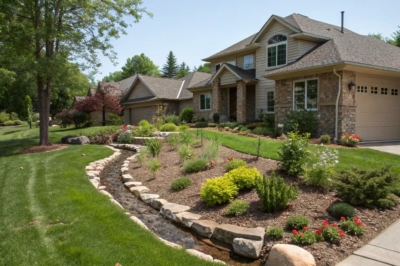1. Use Downspout Extensions
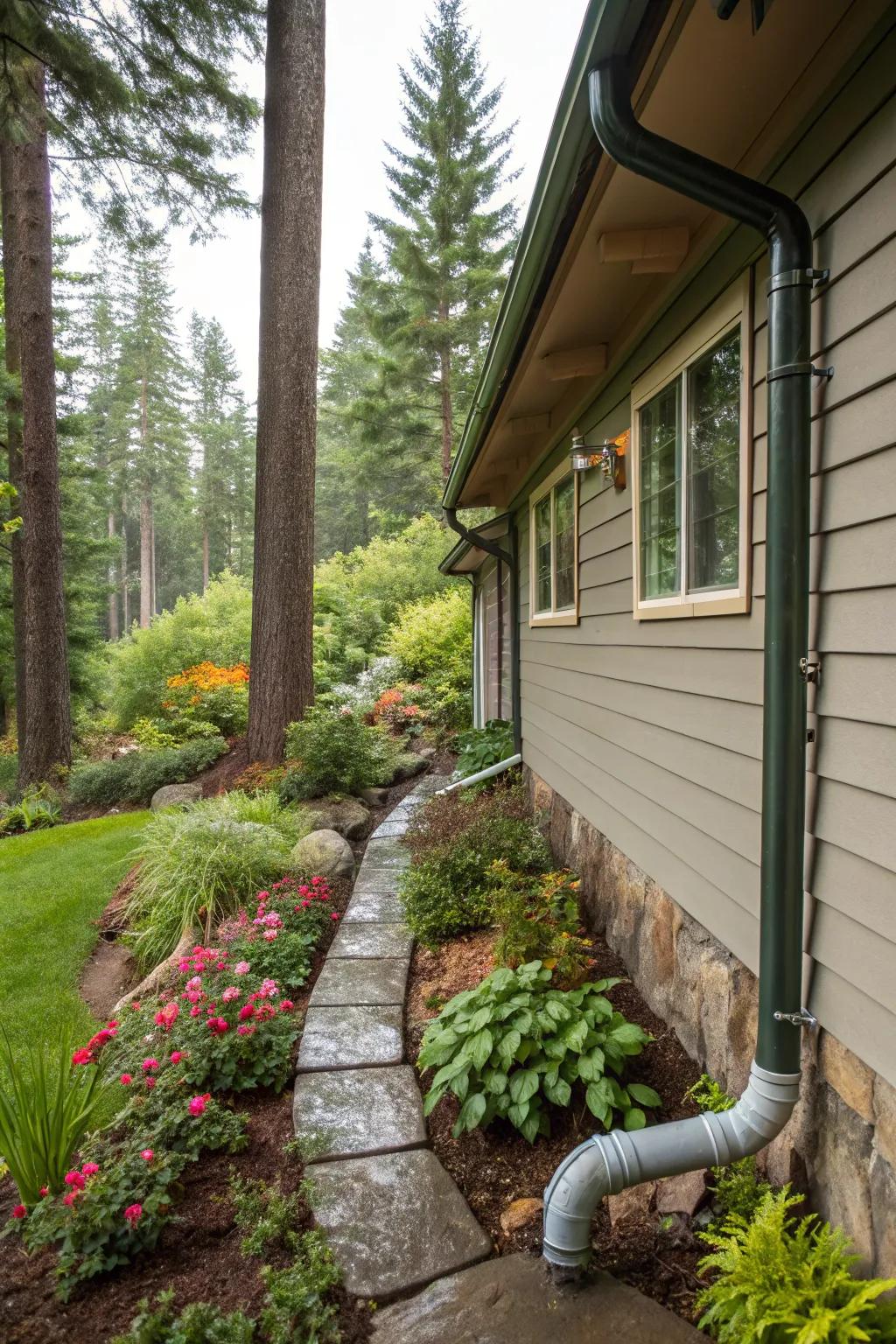
Downspout extensions are the unsung heroes of gutter systems, whisking water far from your foundation. In my experience, a little extension goes a long way in preventing pesky puddles.
Products that could assist:
- Flexible Downspout Extension: Extend your gutter’s reach effortlessly to protect your home’s foundation from excess water.
- Telescoping Gutter Extender Kit: Adjustable extender kit to channel rainwater away and keep your foundation dry.
- PVC Downspout Drainage Pipe: Durable pipe solution for directing water flow far from your home’s base.
2. Create a Gravel Barrier

Laying down a gravel barrier around your home can help absorb and redirect water. I’ve used this simple trick to add both function and flair to my garden paths.
Give these a look:
- Decorative Landscape Gravel: Enhance your garden’s look and function by laying down high-quality, decorative landscape gravel.
- Weed Barrier Fabric: Prevent unwanted weeds from invading your gravel barrier using durable and breathable weed barrier fabric.
- Garden Edging Stones: Define your gravel paths with stylish garden edging stones for a polished and practical finish.
3. Use a Rain Barrel
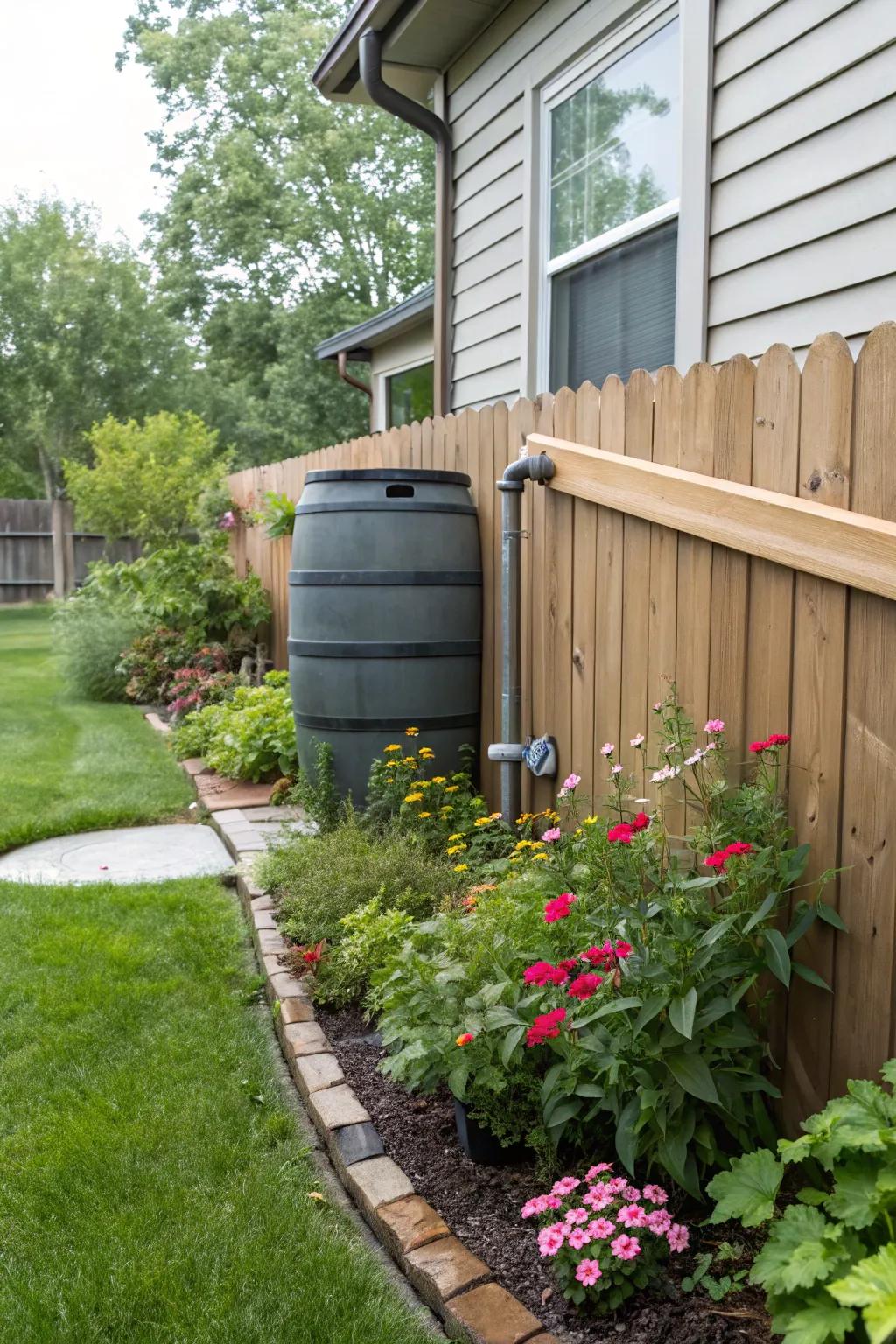
Collecting rainwater in a rain barrel not only helps the environment but also keeps excess water away from your foundation. Plus, it’s perfect for those dry spells!
A few suggestions:
- Rain Barrel with Spigot: Capture rainwater efficiently for your garden and reduce water bills during dry spells.
- Rain Barrel Diverter Kit: Install this diverter to easily direct rainwater from gutters into your rain barrel.
- Decorative Rain Barrel Stand: Elevate your rain barrel for improved water flow and stylish garden decor.
4. Install a Swale

A swale is a shallow trench that guides water to a safe area. It’s like nature’s own gutter system; I’ve used them to prevent garden erosion.
Might be a good match:
- Lawn Edging: Define the swale edges clearly with durable lawn edging. Ensure water flows exactly where needed.
- Landscape Fabric: Use landscape fabric to prevent weeds and maintain soil stability in your swale.
- Garden Shovel: Dig the trench for your swale effortlessly using a high-quality garden shovel. Improve your outdoor efforts.
5. Install a French Drain
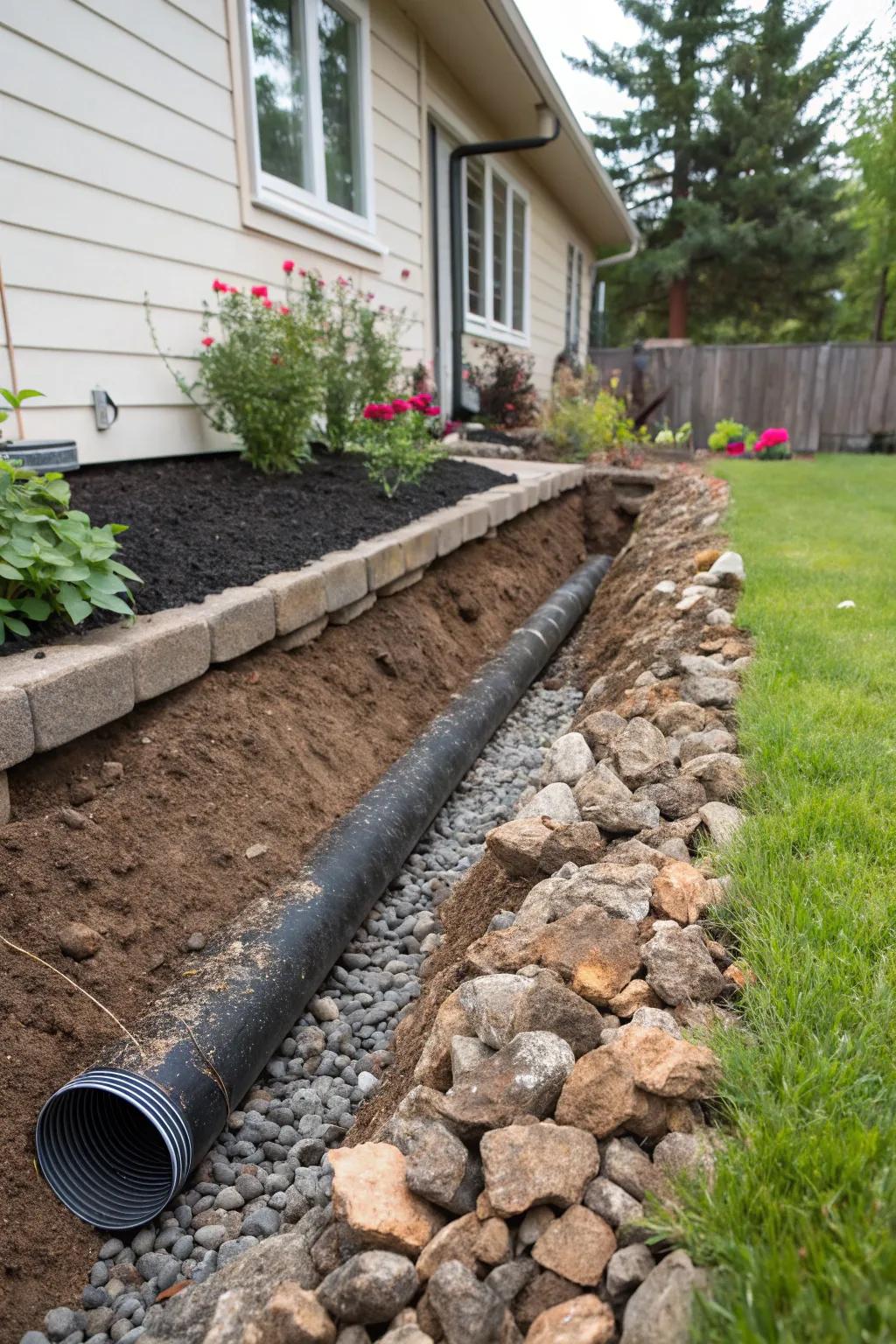
A French drain is like your home’s own personal moat, channeling water away from your foundation. I’ve found these to be lifesavers in my garden, especially after a heavy Texan rainstorm.
Possibly helpful picks:
- Corrugated Drain Pipe: Channel water effectively away from your foundation with robust, flexible corrugated drain pipes.
- Landscape Gravel: Enhance drainage efficiency in your French drain system with premium-quality landscape gravel.
- Geotextile Fabric: Prevent soil erosion and maintain drainage flow with durable, effective geotextile fabric.
6. Install a Catch Basin
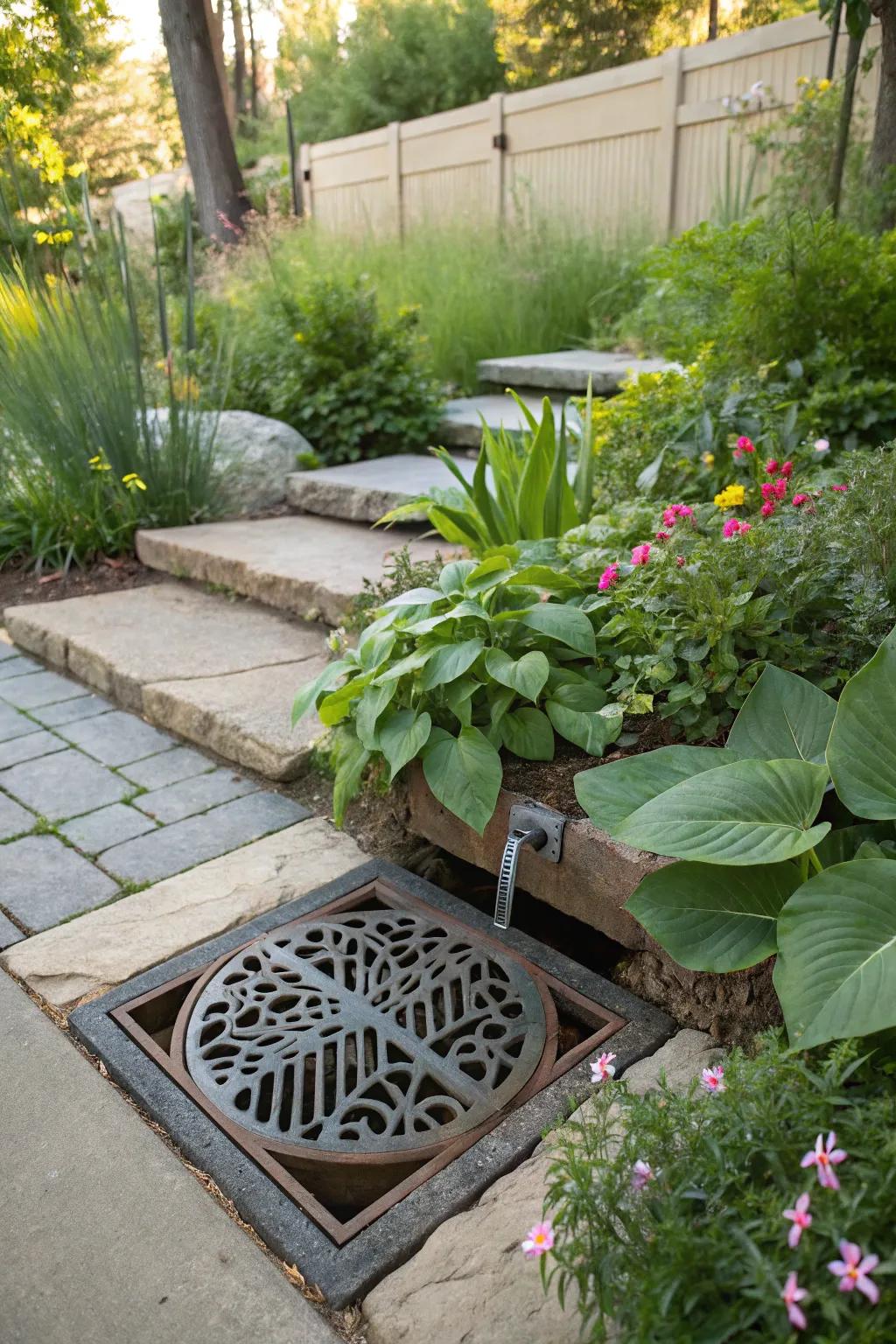
A catch basin captures excess water and redirects it safely away. These hidden gems have kept my yard puddle-free.
Try these:
- Catch Basin with Decorative Grate: Enhance drainage with a stylish grate. Easily blends into your garden while preventing floods.
- Catch Basin Kit with Outlet: Ensure effective water management with this basin kit, featuring an easy outlet connection.
- Heavy Duty Catch Basin Grate: Upgrade your drainage with a robust grate design, enhancing durability and flow efficiency.
7. Regrade Your Yard
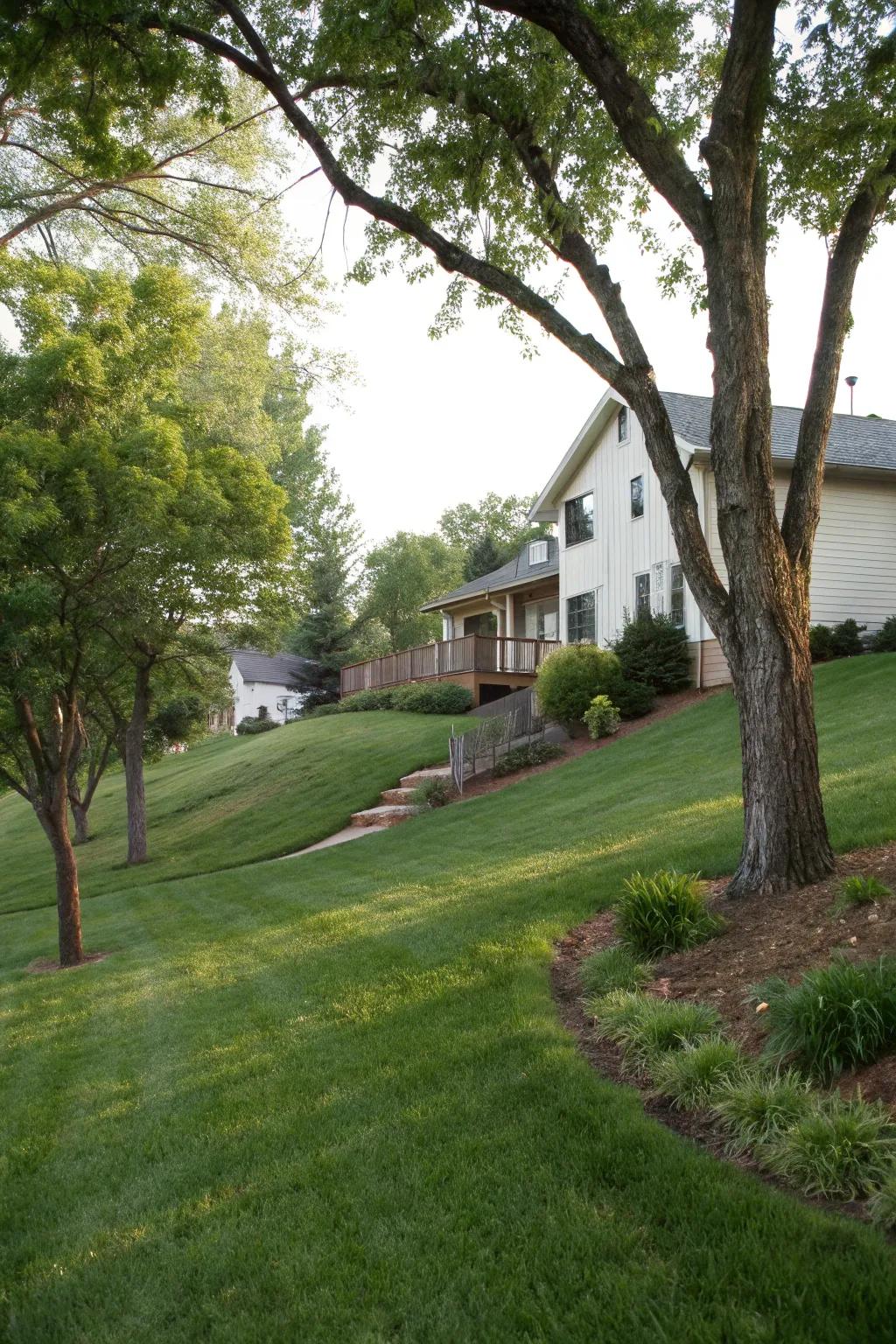
Regrading your yard ensures water flows away from your house. A gentle slope can make a world of difference—I’ve seen it redirect water like a charm.
A few choices to try:
- Landscaping Rake: Achieve a perfect slope with ease. Level soil quickly for effective water drainage.
- Grass Seed for Erosion Control: Enhance ground stability and prevent erosion with high-quality grass seed for your new slope.
- Garden Edging: Define boundaries and direct water flow effectively with durable garden edging solutions.
8. Try a Permeable Patio
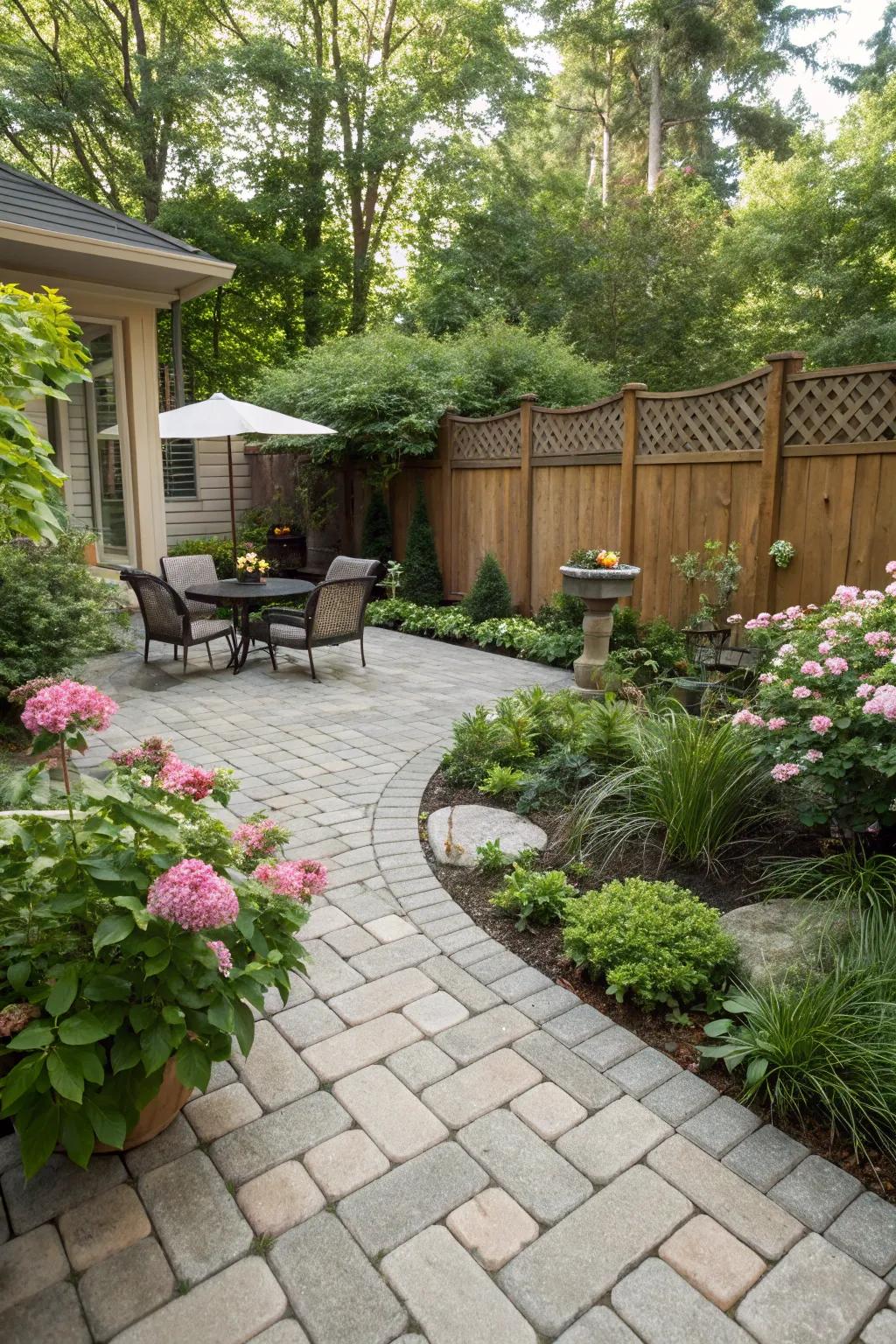
Swap out concrete for a permeable patio that lets water seep through. It’s a stylish upgrade that’s easy on the eyes and the foundation!
Useful items to consider:
- Permeable Paving Stones: Install permeable paving stones to enhance drainage and protect your home’s foundation effortlessly.
- Gravel Base for Patios: Use a gravel base for reliable drainage and improved patio stability.
- Patio Edging Kit: Secure your permeable patio with durable edging that prevents shifting and maintains structure.
9. Try a Dry Creek Bed
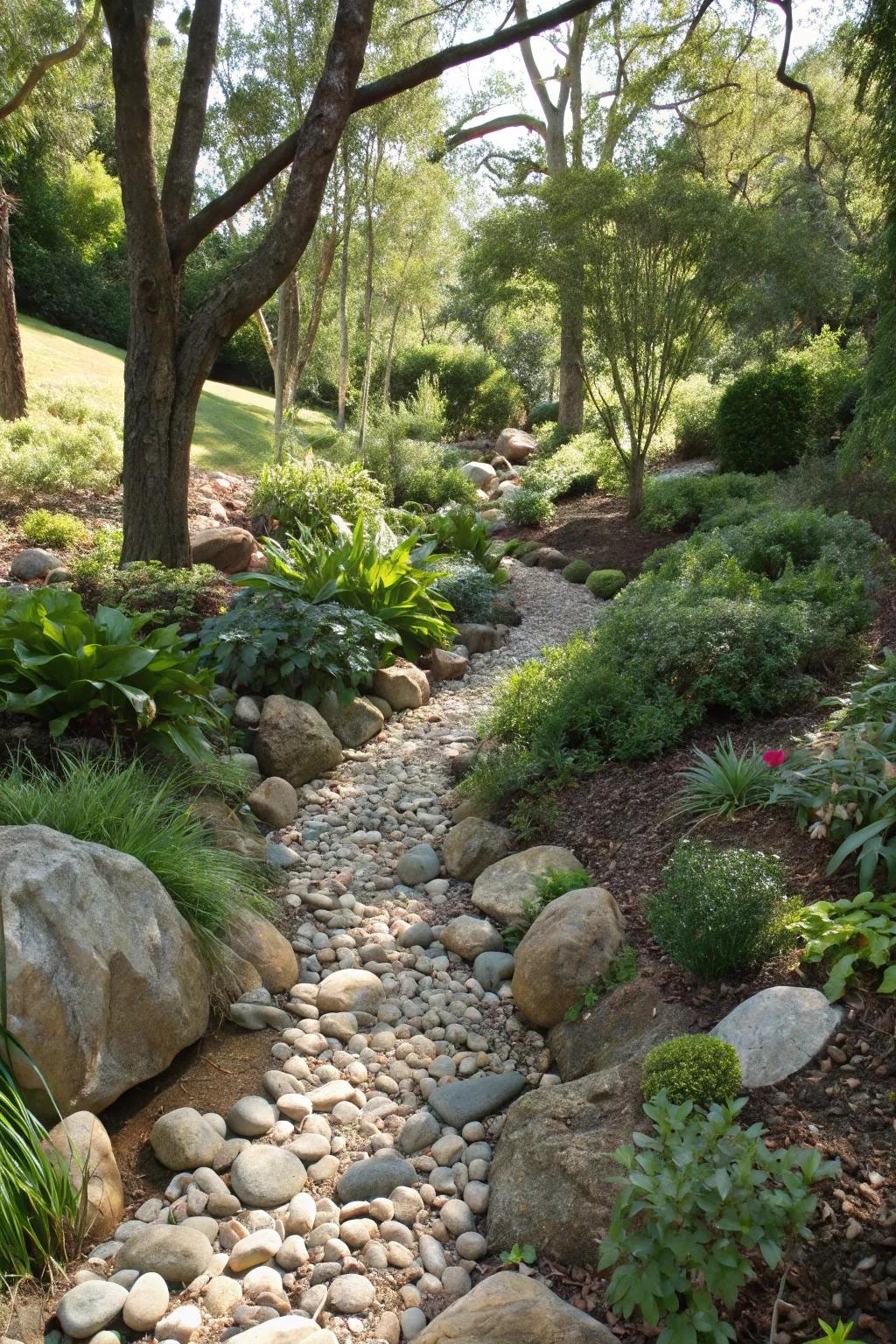
A dry creek bed can transform a drainage issue into a backyard feature. I love how they add a rustic charm while guiding rainwater away.
Some handy options:
- Decorative River Rocks: Enhance your dry creek bed using decorative river rocks for a natural, appealing look.
- Landscape Fabric: Prevent weed growth in your dry creek bed with durable, easy-to-install landscape fabric.
- Garden Edging Stones: Define the edges of your dry creek bed with stylish and functional garden edging stones.
10. Create a Water Channel
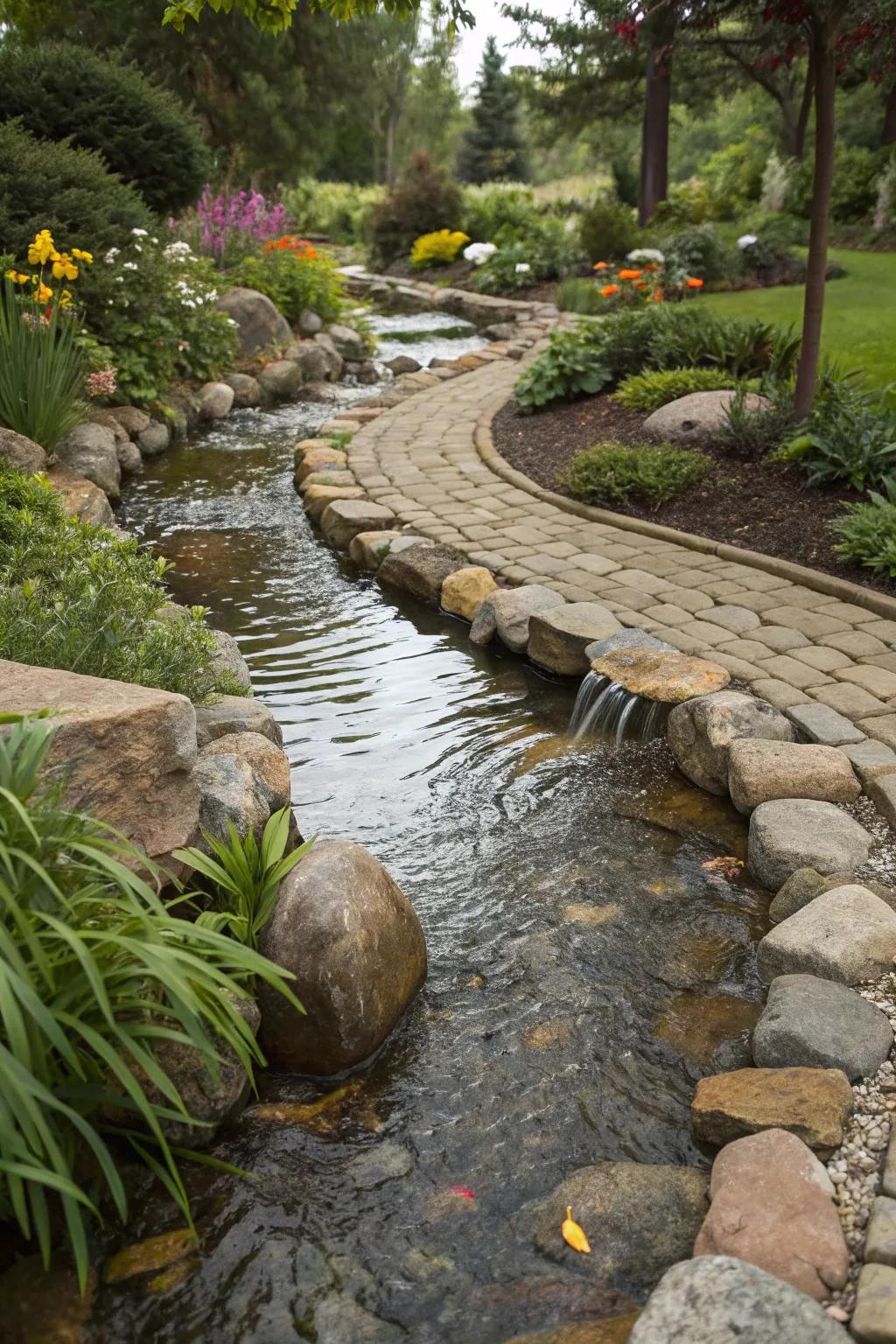
Design a water channel to direct runoff to a safe area, combining utility with creativity. I’ve enjoyed crafting these unique features that also keep my foundation dry.
Items that may come in handy:
- Flexible Landscape Edging: Define your water channel effortlessly and keep water flowing smoothly with flexible landscape edging.
- Decorative Garden Rocks: Enhance the natural look of your water channel with durable decorative garden rocks.
- Solar Water Pump: Add a striking water feature to your channel with an eco-friendly solar water pump.
11. Build a Retaining Wall
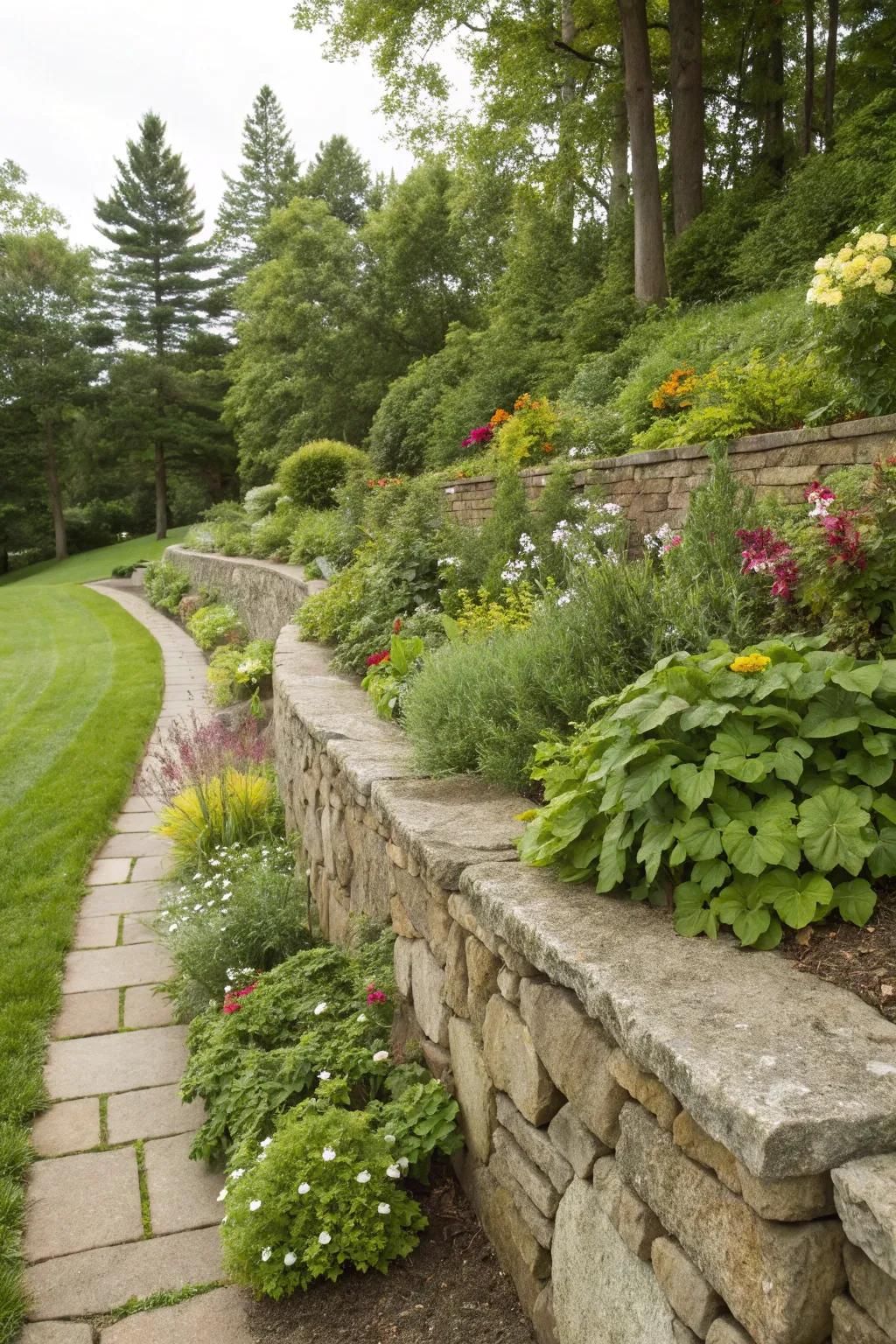
A retaining wall can hold back soil and redirect water flow. It’s a sturdy solution that adds structure and beauty to sloped gardens.
A few helpful options:
- Retaining Wall Blocks: Enhance your garden’s structure by adding durable, stylish retaining wall blocks today.
- Landscape Fabric: Prevent soil erosion by installing high-quality landscape fabric under your retaining wall.
- Drainage Pipe: Ensure water flow management by integrating effective drainage pipes behind your wall.
12. Employ Natural Grasses

Planting natural grasses can slow down water flow and promote absorption. In my yard, they add a wild, natural vibe while keeping it dry.
A few relevant products:
- Natural Grass Seed Mix: Enhance your garden with native grass seeds for better water absorption and natural beauty.
- Garden Soil Moisture Meter: Monitor soil moisture efficiently to maintain healthy grass growth and prevent waterlogging.
- Biodegradable Weed Barrier Fabric: Use a biodegradable weed barrier to support natural grass growth by reducing weed competition.
13. Use a Sump Pump
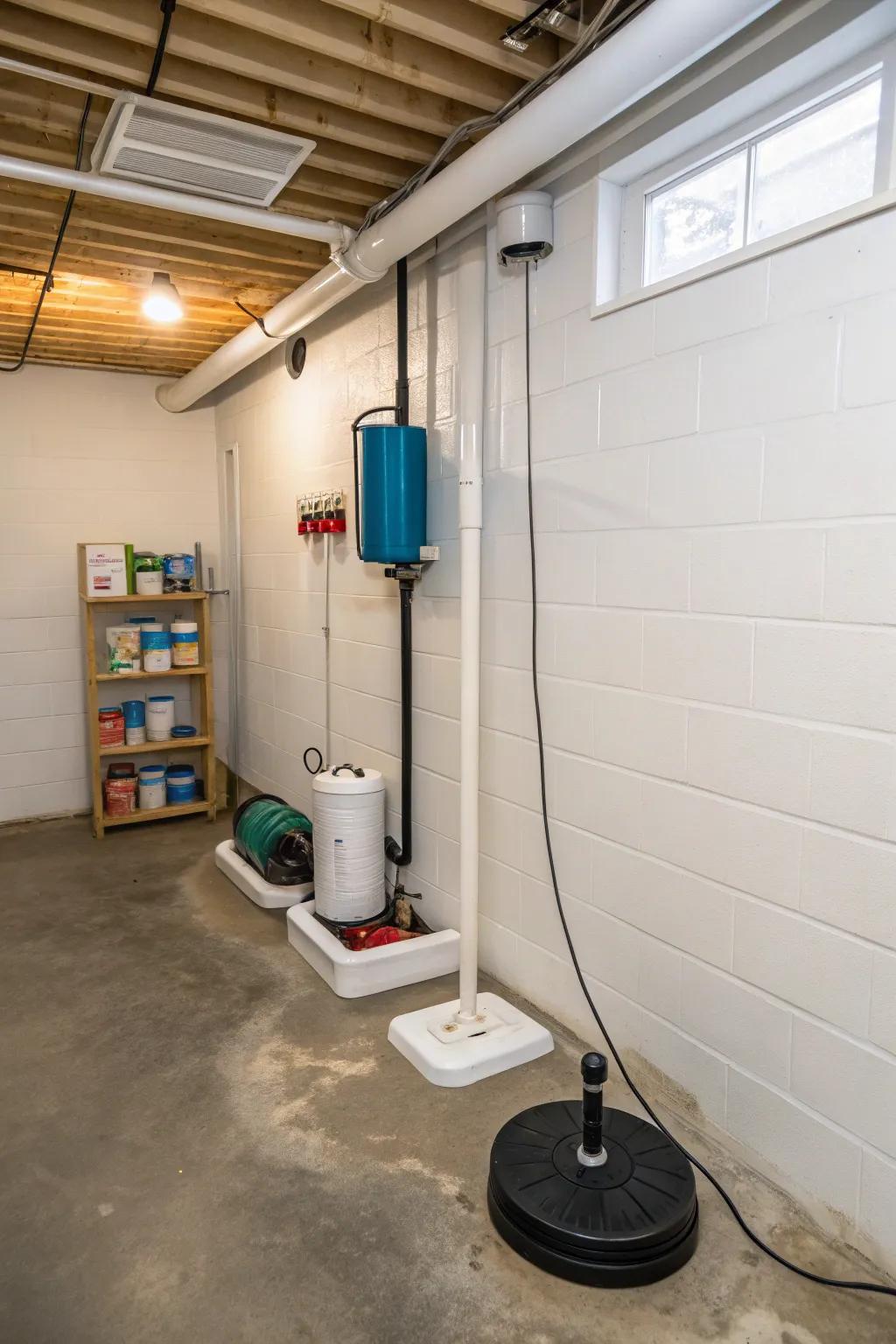
For those heavy downpours, a sump pump is your best friend, keeping basements dry and foundations safe. In my basement, it’s been a real lifesaver during storm season.
Explore these options:
- Sump Pump System: Keep your basement dry with a sump pump system, ideal for heavy downpours and storm seasons.
- Battery Backup for Sump Pump: Ensure uninterrupted operation even during power outages with a reliable sump pump battery backup.
- Sump Pump Alarm System: Stay alert to potential issues with a sump pump alarm system for peace of mind.
14. Install Curtain Drains
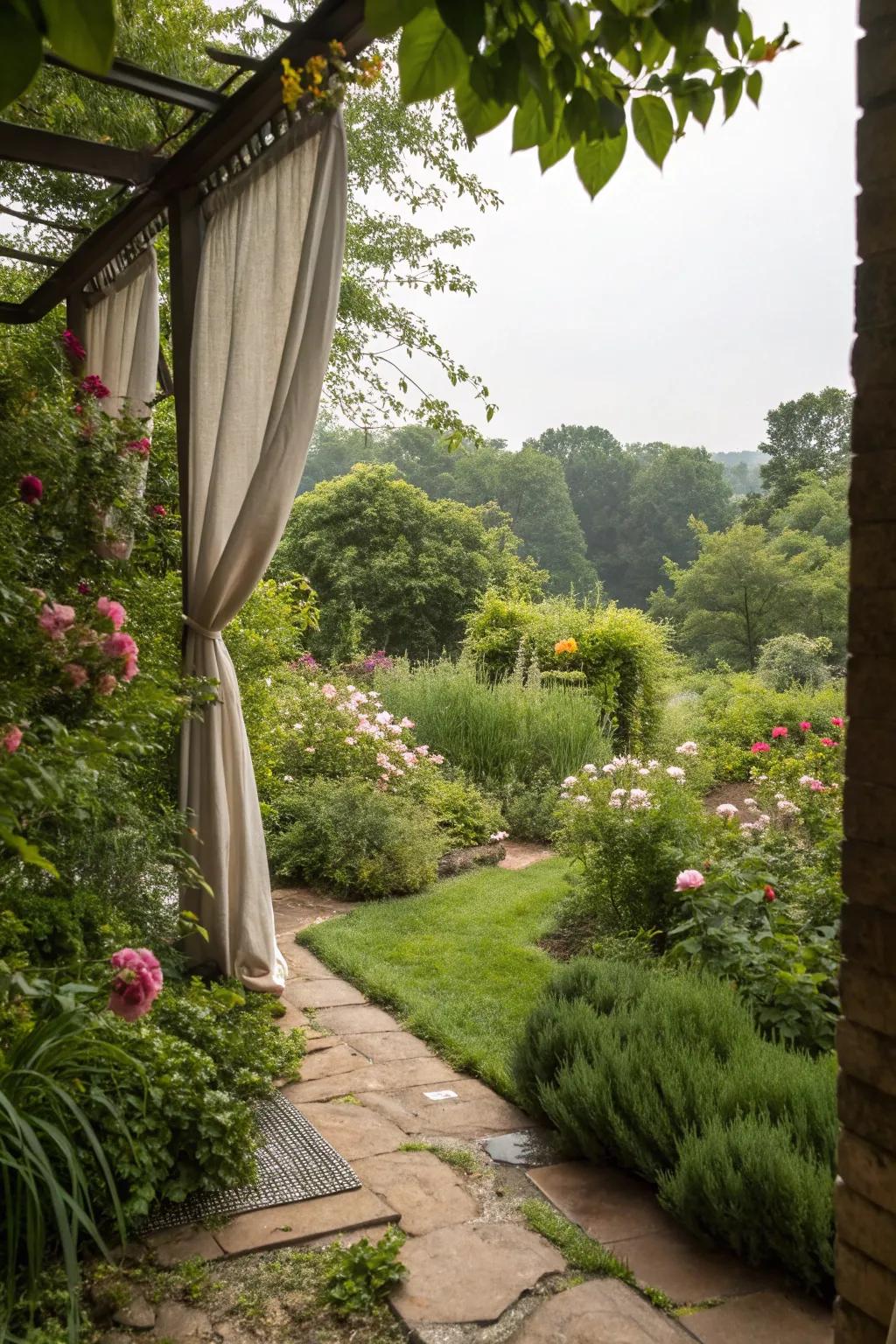
A curtain drain acts like a hidden shield for your foundation, channeling water away from trouble spots. I love how they seamlessly blend into the landscape.
These products might help:
- Perforated Drain Pipe: Easily channel water away from your foundation with this robust perforated drain pipe.
- Gravel for Drainage: Use quality gravel to enhance water flow through your curtain drain system efficiently.
- Geotextile Fabric: Prevent soil from clogging your drain pipes with durable geotextile fabric.
15. Incorporate Aquatic Plants
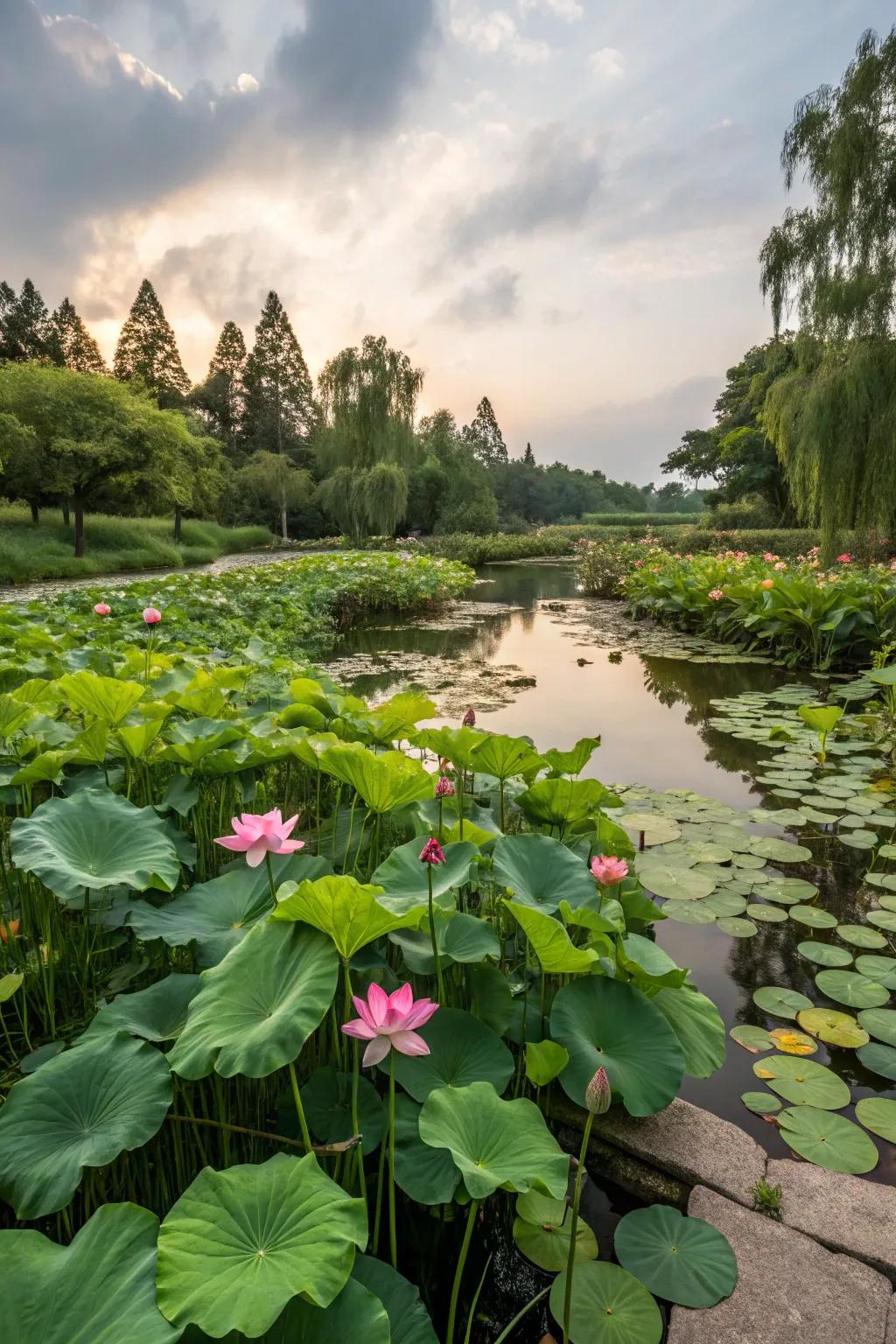
Aquatic plants can thrive in wet spots and help absorb excess water. In my garden, they add a splash of green and a touch of tranquility.
You might like:
- Aquatic Plant Fertilizer: Boost plant growth with this fertilizer, designed for lush and healthy aquatic plants.
- Aquatic Planting Baskets: Securely plant and display aquatic plants with these durable and versatile planting baskets.
- Water Lily Bulbs: Transform your garden with beautiful water lilies that thrive in aquatic settings.
16. Consider a Rain Garden
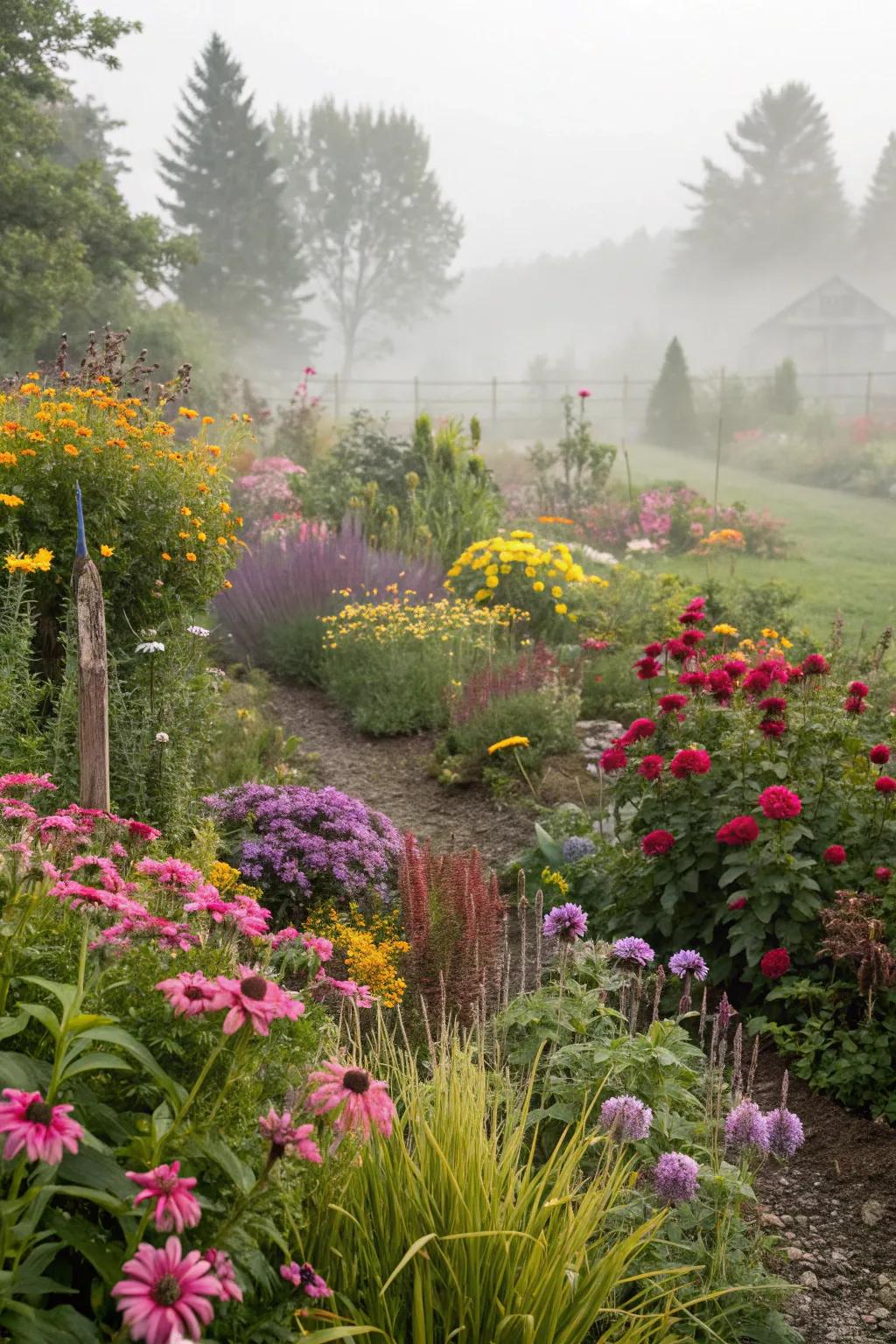
Plant a rain garden where water tends to collect; it’s a delightful way to use nature to your advantage. My rain garden bursts into color every spring, and it helps soak up excess water like a sponge.
